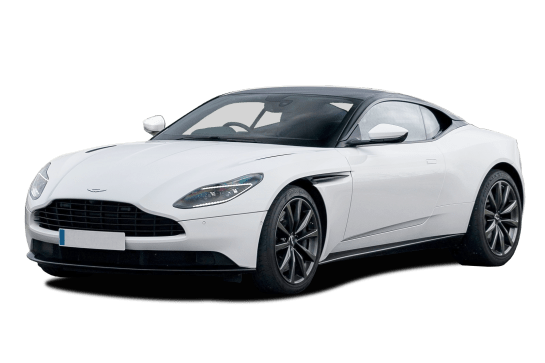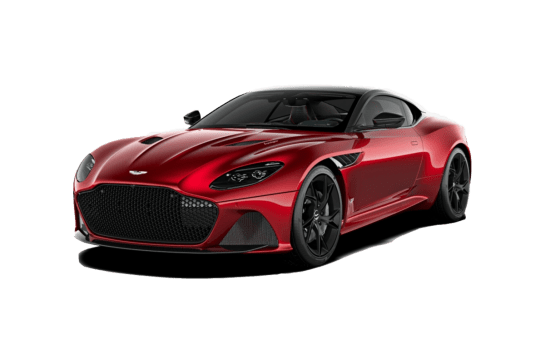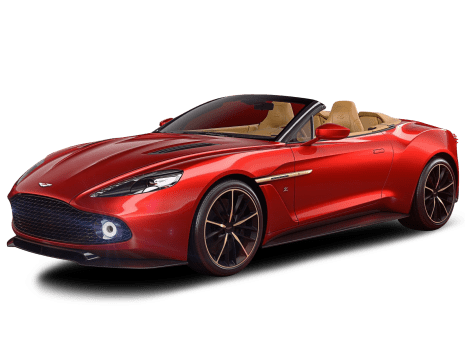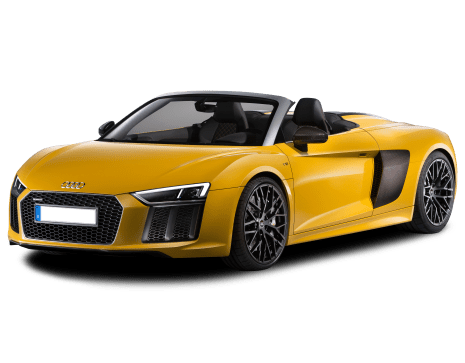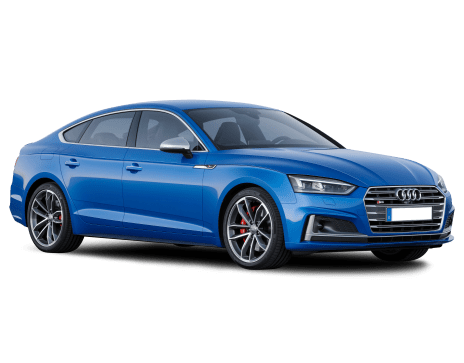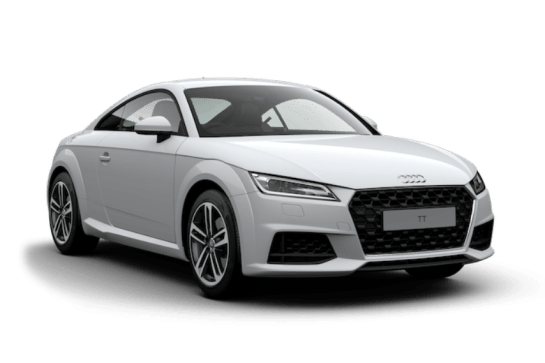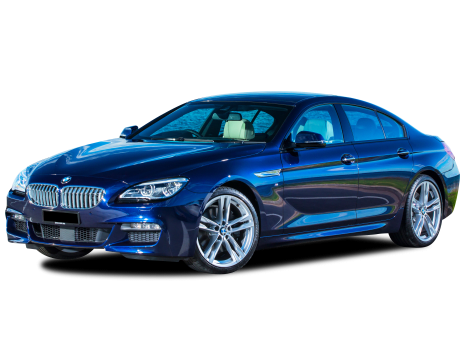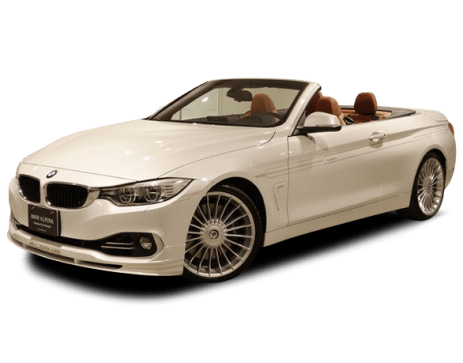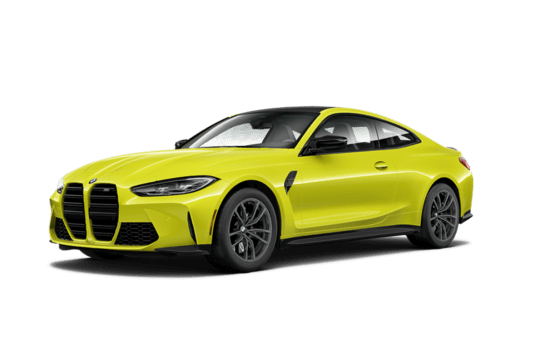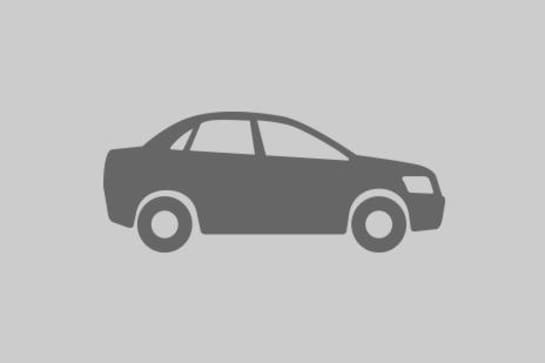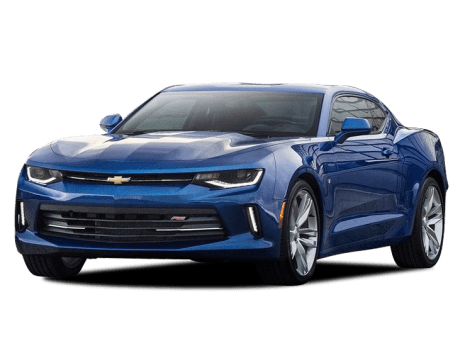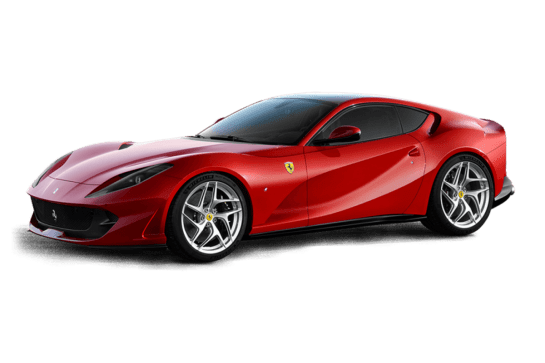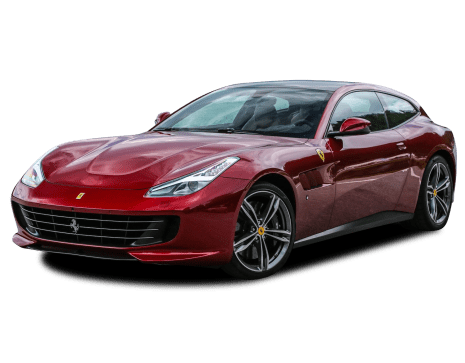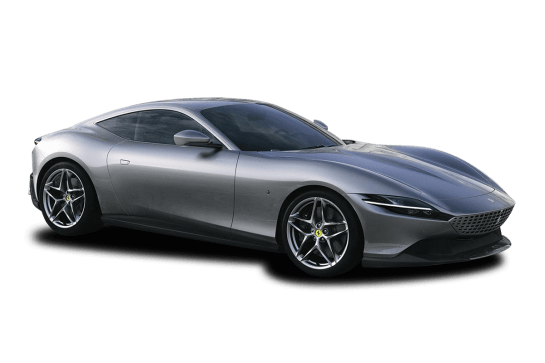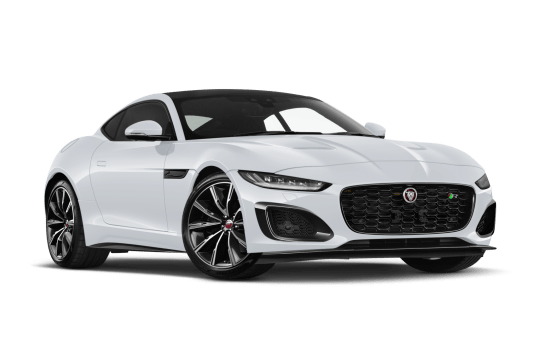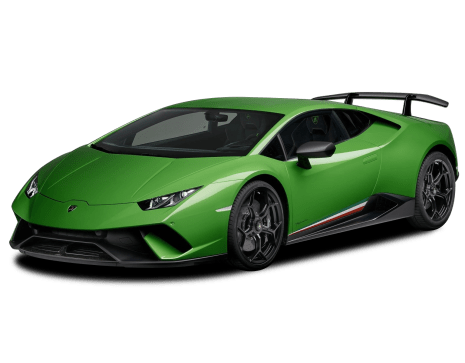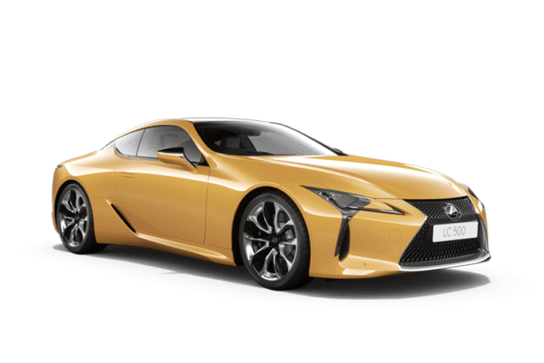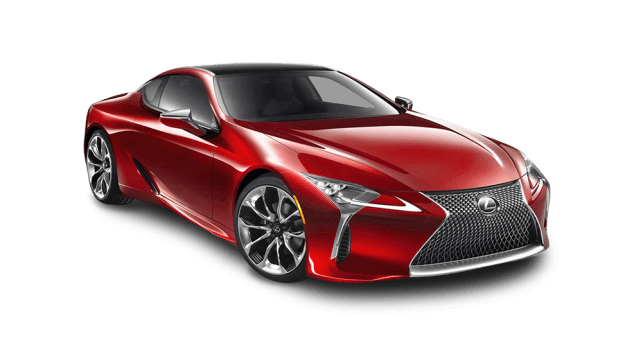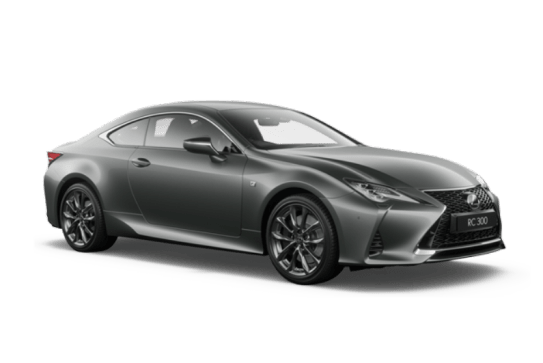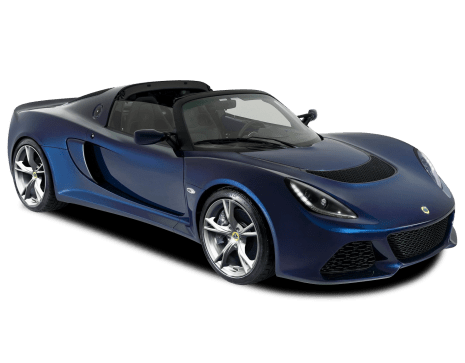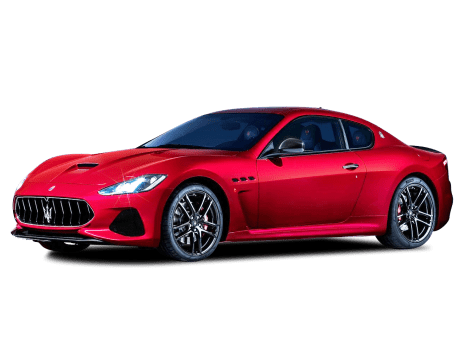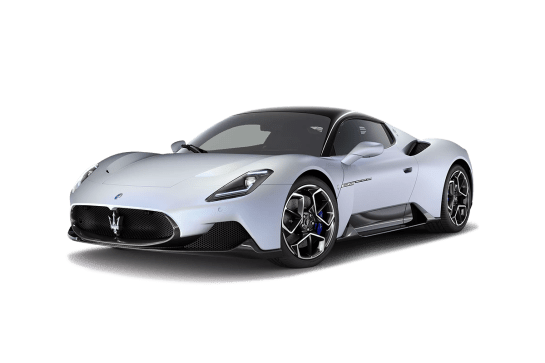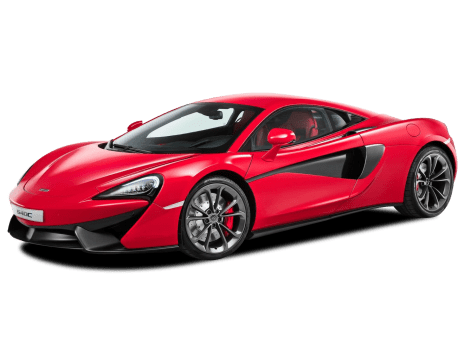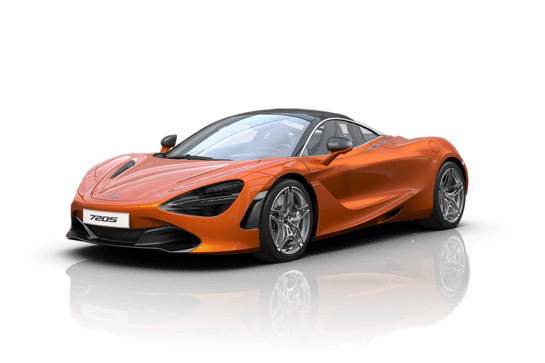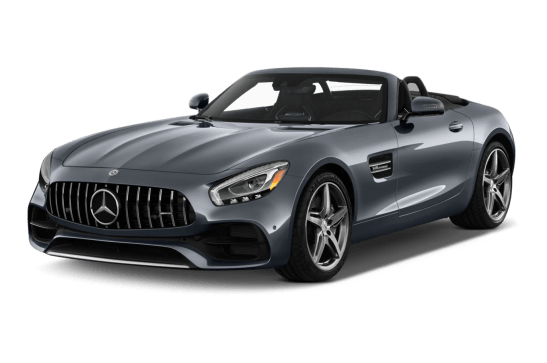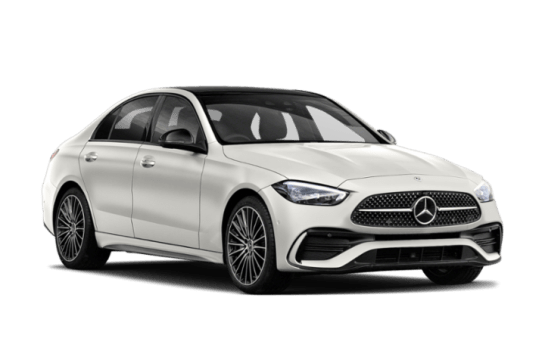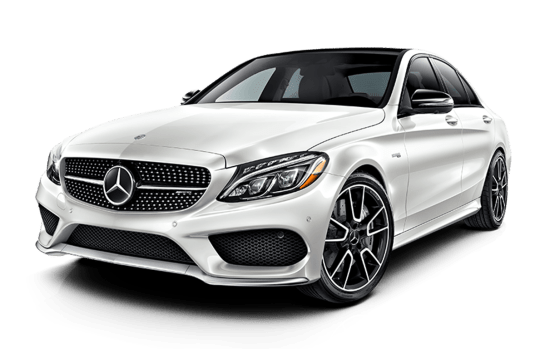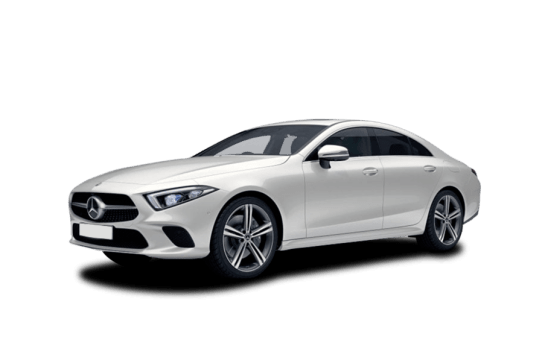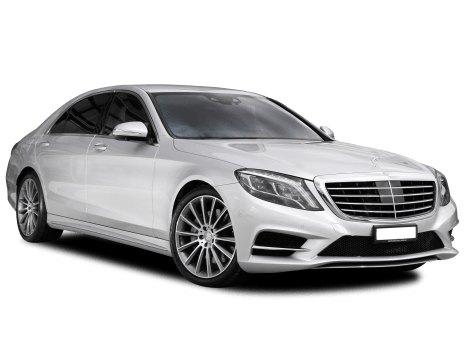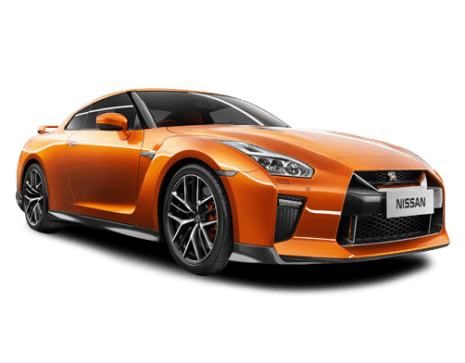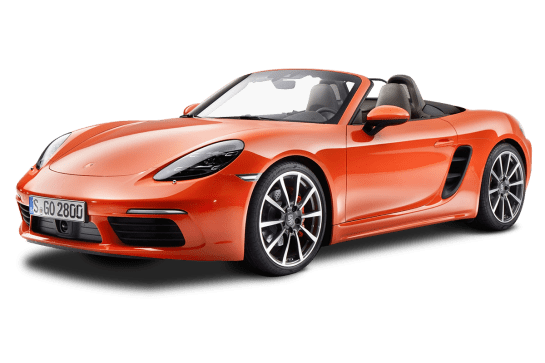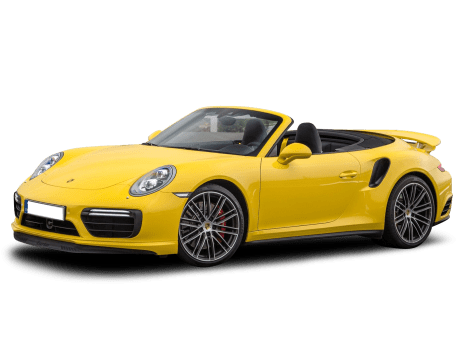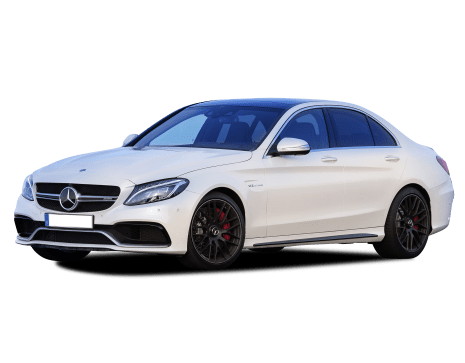
Mercedes-Benz C63 VS Porsche 718
Mercedes-Benz C63
Likes
- Amazing power
- Addictive sound
- Impressive to drive in most situations
Dislikes
- Price is high
- Still not 100 per cent on the Coupe’s looks
- No applicable ANCAP score
Porsche 718
Likes
- Fantastic engine
- Sharp driving dynamics
- Muscular, purposeful looks
Dislikes
- Complex roof system
- Not as liveable as a regular 718
- Might be the last petrol-powered 718
Summary
Mercedes-Benz C63
If you know the Mercedes-AMG C 63 S, you know it’s a hardcore V8 thumper with little in the way of bashfulness. It’s a brawler. A beast.
Now there’s an even more eye-catching AMG C 63 S Coupe, which we’re testing here. It’s the Aero Edition - a collector’s version of the current-generation C 63 S Coupe with a bit more visual bling that also helps it stick to the road better.
It is a local area special edition, with only 63 examples to be sold across Australia and New Zealand. And if the rumours are true, the next-generation will see the V8 engine in danger of being axed in favour of a hybrid, high-performance four-cylinder version. Say it ain’t so!
Well, if the CarsGuide crystal ball turns out to be right, maybe one of these C 63 S Aero Editions is worth getting in your garage quick-smart. Or is it? Let’s go through the criteria and see how it stacks up.
| Safety rating | |
|---|---|
| Engine Type | 4.0L turbo |
| Fuel Type | Premium Unleaded Petrol |
| Fuel Efficiency | 10.3L/100km |
| Seating | 4 seats |
Porsche 718
“If this is to be our end, then I would have them make such an end as to be worthy of remembrance.”
King Theoden may have been talking about the men and women of Rohan in The Lord of the Rings, but he could have just as easily been talking about the team behind the Porsche 718 Boxster.
It’s been nearly 30 years (yes, that long) since the Boxster joined the Porsche line-up as the more affordable sports car alternative to the 911, but now it’s facing a dramatic change that will make it a very different beast.
Read more about
Porsche has committed to an electric future for the 718 but before it does so, there was one more petrol-powered version to create, this one, the 718 Spyder RS. It stands to be the final 718 to have an internal combustion engine, but could also be the best.
The 718 Spyder RS is the Boxster version of the previously released Cayman-based GT4 RS. So it takes every element of the sports car and turns it up to 11. This is faster, more powerful, lighter and more dynamic than the Boxster has ever been.
| Safety rating | — |
|---|---|
| Engine Type | 4.0L |
| Fuel Type | Premium Unleaded Petrol |
| Fuel Efficiency | 12.9L/100km |
| Seating | 2 seats |
Verdict
Mercedes-Benz C637.8/10
The Mercedes-AMG C 63 S Aero Edition is an absolute beast of a car, but it comes at a pretty hefty price. Yes you get a lot of performance, and the fact there are only 63 examples being made for Australia and New Zealand could be enough to get you to sign on the line. For me, though, if I was after a C 63, it’d have to be a wagon. It doesn’t need an Aero pack to look better.
Porsche 7187.4/10
If this is to be the end of the 718 as we know it, then it is an end to be remembered. Porsche has produced something special in the Spyder RS, a sports car that can compete with the 911 on any stretch of road - which is something so few cars can claim. The focus on performance has driven the entire concept of the car, but all the elements work in harmony, with form and function coming together.
Design
Mercedes-Benz C638/10
I’ve never been the biggest fan of the current C-Class Coupe’s styling. To me, it has always looked a little droopy, a little melted at the back.
I have to say, the Aero Edition has changed my opinion somewhat, as the new graphic elements help lift it up a bit, visually raising its rear up like a stretching cat, tail in the air. I’m still not 100 per cent on it, but to my eye it’s better.
The carbon-fibre trim elements that have been added to the exterior certainly add some menace to the look, too, and I simply can’t help but constantly notice out of the corner of my eye the AMG pressing in the staggered, dished rims. At a glimpse, from a distance, it looks like rim damage, but thankfully it’s not!
The staggered set-up does really add some width and mongrel to the look, as if it needed more, with its open maw lower bumper air dam, and the signature 'Panamericana' grille treatment which looks like an evil character out of a movie. If you know the one I’m talking about, let me know in the comments.
As much as the look matters when it’s parked in your driveway, it’s the cabin that arguably matters more, right? That’s where you spend your time, after all. Check out the interior images to see if you think it lives up to the exterior look.
Porsche 7189/10
As the pinnacle of not only the current 718 range, but potentially the entire combustion engine era of the Boxster, Porsche has pulled out all the stops for the Spyder RS.
This includes major changes to the design, but none are purely for aesthetic reasons and instead are driven by the search for performance; and the fact they make the 718 look tougher, meaner and more purposeful than ever before is just a bonus.
It’s a comprehensive redesign that starts at the bumper with a new front lip spoiler to enhance downforce. Then there’s a pair of NACA ducts on the lightweight bonnet to improve brake cooling without compromising aerodynamic drag. The lightweight front fenders include wheel arch vents to stop any potential for front-end lift at high speeds.
And the fenders aren’t the only component that’s gone on a diet, there’s a lighter exhaust, lighter wheels, lighter bonnet, lighter roof, lighter door panels and even lighter carpets on the inside. All up, the Spyder RS tips the scales at 1400kg, which is 40kg lighter than a standard 718 Boxster.
If it’s still not light enough, you can opt for the optional 'Weissach Package' (which was fitted to our test car), which brings even lighter 20-inch forged magnesium wheels and carbon-fibre reinforced plastic for a range of parts including the front luggage compartment, rollover bars and ducktail spoiler on the Gurney flap – plus some cosmetic enhancements.
And we still haven’t even touched on the biggest design change yet - the rear half of the car. Starting with the roof, which Porsche actually calls a ‘sunshield’ and ‘weather guard’ because it’s a stripped down version of what the brand usually uses, to save weight and let the glorious engine noise into the cabin uninterrupted.
But it’s also necessary because the entire rear engine cover has been redesigned to accommodate the larger engine that Porsche has installed in the Spyder RS, a 4.0-litre six-cylinder instead of the usual turbocharged four-cylinder ‘boxer’ engines.
While the Spyder RS looks great with the roof/sunshield on or off, frankly the removal process is much too complicated and requires repeated viewings of a YouTube tutorial to still get it wrong.
While owners will (likely) eventually get the hang of it, it will always be a clunky and awkward process and that’s just the price of being so focused on performance, which you can accept or not.
Inside that ethos of performance over practicality continues, with sports seats, an Alcantara-wrapped steering wheel and even the previously mentioned lightweight carpet floor mats.
It’s a purposeful, rather than luxurious, cabin, but that perfectly suits the nature of the Spyder RS. Our test drive included several long stretches behind the wheel and at no stage did it feel uncomfortable or impractical, despite its stripped-down design.
Practicality
Mercedes-Benz C637/10
No two-door coupe is going to offer you the space and comfort of a sedan or wagon, that’s just a fact. But that only matters if you plan to actually use the rear seats. If you don’t, then the Coupe version of the C 63 S might be perfect for you.
Even so, I managed to (only just) squeeze myself between the seat and the door opening to slide into the rear row. This won’t be easily achieved by all attempters, especially on the driver’s side.
Let’s just say I probably looked like I was doing something very weird to the driver’s seat as I spider-manned my way in.
The rear space is tight for someone my height (182cm/6’0”) behind their own driving position, with knees hard-up against the seat in front and not much headroom (my noggin’ was brushing the ceiling) or toe space (size 12s don’t fit so well) to speak of.
It’s certainly a selfish car. Or maybe it’d be fine for smaller kids. There are two spaces in the back, both with ISOFIX child seat anchors and top-tether points.
But there is storage in the back - cupholders and storage caddies either side of the seats, though the storage situation improves in the front zone, with bottle holders in the doors, cupholders between the seats, loose item storage under the media screen and a covered centre armrest bin, too.
The front cabin is a special looking place, with carbon-fibre abounding across the dash and nice trim on the doors. The AMG steering wheel is a sight to behold - it’s a flat-bottomed unit with carbon-fibre and Dinamica (that’s Benz talk for microsuede) trim: perfect for sapping sweat as you manhandle the C63 through the bends.
The seats are AMG Performance sports units up front, and the trim used is reserved for this model specifically: Nappa leather with yellow stripes. There are yellow details elsewhere, including on the rear seats, centre console and dash, and it certainly adds some visual excitement.
Media is controlled by a 10.25-inch display and Mercedes-Benz’s touchpad control system, but there is no touchscreen - rendering the Apple CarPlay and Android Auto smartphone mirroring technology somewhat tedious.
I’ve always had a gripe with screens that don’t allow touch but feature the tech that’s designed to transfer your phone’s screen to the media unit, and I can tell you the longer you spend twiddling the dial to get where you want to go, the more annoying it becomes.
The Burmester sound system has 13 speakers and is rather good, but I prefer the sound from the standard fit variable sports exhaust. So maybe that quibble with CarPlay isn’t that big a deal.
And if you just want to charge your phone, and there’s a second USB port up front, as well. Note: in non-Aero Edition C 63 models without the carbon-fibre interior pack, you also get Qi wireless phone charging, but it’s deleted from this variant and any model with the carbon pack.
The driver has a 12.3-inch digital info display to show where you are and what the car is up to, and there’s a head-up display as well. Yep, there’s standard sat nav with live traffic updates (and even live fuel price updates) - it’s just a shame the maps still look early 2000s-spec in 2D layout.
Cargo space is okay. The claimed cargo capacity or boot volume is 355 litres (VDA) with the rear seats in place. That’s small for a coupe of this size, and the shape of the boot (with a hump behind the rear seat) isn’t great as things do move around quite a bit.
But, thankfully, Mercedes has included its clever foldable storage box system under the boot floor - it goes where you might usually expect a spare wheel, but there isn’t one in this car. Instead you get Mercedes’ 'Tirefit' repair kit with an electric pump.
Porsche 7186/10
One area where the 718 range is starting to show its age quite dramatically is the in-car technology. While Porsche’s native system is relatively user-friendly, the lack of wireless Apple CarPlay or Android Auto in any capacity is deeply out-dated; and was frustrating for this Android using reviewer.
Given the age of the current 718 platform, and the impending arrival of the new model, it’s understandable that the multimedia system didn’t get an overhaul, but for a $350K car it does feel a bit behind the times.
In practical terms the Spyder RS is a bit of a struggle if you plan to go away with it. We managed to get a small suitcase and backpack in the under bonnet storage, but that was at capacity. While the addition of the larger engine removes any meaningful rear storage space.
Price and features
Mercedes-Benz C637/10
Look, I’m not likely to ever be in the position to say that a car that costs $188,600 plus on-road costs is “good value”, but to be honest, if you’re in that position, you’ll be getting plenty of car for your cash.
The Carbon Edition of the C 63 S Coupe adds $17,200 over the standard version of the high-performance two-door, but it adds a bunch of extras to help justify its price. A car like this is always going to be seen by some as a profligate purchase, right? You need to be able to justify spending an extra MG3’s worth of cash on this Edition.
The noticeable exterior bits include an AMG Performance rear spoiler, a model specific front lip, rear diffuser, and side facings for the rear apron air vents. Carbon-fibre is used in the front apron A-wing, the side sill inserts, rear diffuser insert, rear spoiler and the side mirror casings.
There’s more carbon-fibre inside the cabin, which we’ll cover off in the interior section. Other additions over the standard C 63 S Coupe include ceramic composite front brakes (402mm six-piston) and 360mm single-piston rear brakes, and there are “ultra-lightweight” AMG forged 'Matt Black' alloy wheels with 19-inch rims at the front and 20s at the rear.
And in nice news, the car you see here has no optional extras fitted at all. The colour is 'Iridium Silver', one of only two options for this limited run model (the other available hue is Polar White, and both come at no extra cost).
Standard inclusions comprise leather interior trim, heated and electric adjustable front seats, dual-zone climate control, a 10.25-inch media screen with sat nav and smartphone mirroring, DAB radio, 13-speaker Burmester sound system, 12.3-inch digital driver info display, head-up display (HUD), ambient lighting, and performance items like active dynamic engine mounts, an adaptive AMG performance exhaust, a rear differential lock, and adaptive sports suspension.
Plus there’s a full-spec safety offering which we’ll cover in the section below.
Thinking about what cars compete with this one? There’s the Audi RS 5 Coupe (from $150,900), the Lexus RC F (from $136,636), and the BMW M4 Competition (from $167,829). So the C 63 S - which is already expensive comparatively - looks positively pricey in Aero Edition spec.
Porsche 7188/10
The bad news is, the Spyder RS costs just over $200,000 more than the entry-level 718 Boxster, which is not a small sum of money. The good news is, for that $200K, Porsche has overhauled the 718 from nose-to-tail and enhanced it in nearly every aspect.
There’s a raft of mechanical changes that we’ll get to later on, to help justify the $334,200, plus on-road costs, asking price, but from a specification perspective there are some notable inclusions.
For starters it comes with the 'Porsche Communication Management' (PCM) multimedia system, which includes in-built navigation and Bluetooth connectivity, as well as a 110-watt sound system.
But Australian delivered cars get an even higher level of standard equipment than other countries, with LED headlights including 'Porsche Dynamic Light System' (PDLS), cruise control, digital radio, rear 'ParkAssist' with reversing camera, 'Light Design Package', tyre fit set and windscreen with grey top tint, plus a no-cost optional Bose Surround Sound System all included.
It may be $200K more than 718 but compared to a 911, it actually makes a pretty compelling value argument. A 911 Cabriolet Carrera S starts at $342,700 (plus on-road costs), making that Spyder RS $8500 cheaper and a genuine alternative to its ‘big brother’.
Then, when you compare it against similar mid-engine European sports cars, such as the Maserati MC20 (from $510,000) or McLaren Artura (from $477,310) the Porsche looks like a bargain; relatively speaking, of course.
Under the bonnet
Mercedes-Benz C639/10
Open the shapely bonnet of the C 63 S and you’ll find a hand-assembled horsepower-monster engine with a printed name plaque to prove it.
The 4.0-litre twin-turbo V8 produces 375kW of power at 6250rpm, and 700Nm of torque from 2000-4500rpm. It runs a standard-fit nine-speed 'Speedshift MCT' (multi-clutch transmission) automatic, and it’s rear-wheel drive. And yes, that means it likes to boogie.
The claimed 0-100km/h time is just 3.9 seconds, and top speed is apparently pegged at 250km/h. Yeesh.
The name on the “Handcrafted by” plaque on this particular engine? Hat tip to you, Julian Rembold. This is quite a piece of work.
Porsche 7189/10
The key stat for the engine is the cylinder count. Gone are the four cylinders and instead it’s a return to Porsche’s iconic flat-six.
Specifically, the same 4.0-litre six that Porsche uses in its 911 GT3, which is a lot of engine to squeeze into the middle of this lightened sports convertible.
In order to keep the 718 in its place (beneath the 911), Porsche has slightly detuned the engine, so it makes 368kW/450Nm (compared to 375kW/460Nm in the 911 GT3), but the German brand has never worried about a kilowatt contest and instead prefers to focus on driveability and the other elements that make a drive great.
To that end the combination of air-intakes next to the headrests and the lightweight stainless steel exhaust (which gets titanium tips on the Weissach Package) helps the Spyder RS sound like a Carrera Cup racing car when you really wind it up to its 9000rpm redline.
Not that the performance isn’t spectacular, though, with Porsche claiming it takes the Spyder RS just 3.4 seconds to run 0-100km/h, only 10.9 seconds to get from 0-200km/h and will hit a top speed of 308km/h.
The engine is paired to a seven-speed dual-clutch auto transmission (or PDK in Porsche-speak) that the company claims has “short-ratios”, but with peak power not hitting until 8400rpm and peak torque from 6750rpm, you don’t have to rush the ratio changes.
Efficiency
Mercedes-Benz C636/10
High numbers are what AMGs are about. Sadly that’s the case not only for performance outputs but also fuel consumption.
The official combined cycle fuel use claim for the C 63 S Coupe is 10.3 litres per 100 kilometres, and you need to fill it with 98RON premium unleaded fuel, too.
On test? Well, across a mix of different driving - urban, highway, back road and spirited stints - I saw an 'at the pump' return of 12.2L/100km, while the digital readout stated 12.0L/100km.
Given the performance on offer, and how much I took advantage of it during my week with the car, that’s not bad…
Fuel tank capacity is 66 litres. So go easy if you know there won’t be a fuel stop for a while.
Porsche 7187/10
Porsche says the 4.0-litre engine in the Spyder RS uses 13.0L/100km, which is a big number for what is a relatively small car. But that engine is highly-tuned and built for performance not efficiency, so it’s something owners will need to accept.
Our test drive included some long highway stretches, as well as some spirited driving and urban commuting, so a good mix across all conditions, and we saw consistent returns around the 15-16L/100km range.
It has a 64-litre tank, which means a theoretical driving range of around 490km, assuming you can hit the official claim.
Driving
Mercedes-Benz C639/10
Just one word sprang to my mind when it comes to accurately describing the performance on offer from this car. The word is ‘brutal’.
Smash the accelerator and the power and torque on offer is enough to make your eyes feel like they’re not doing the right thing anymore. You get pushed back in your seat with a surge, and your ears are also rewarded with one of the best soundtracks in the automotive world.
The engine builds pace with enormous intent, and the sound that comes from under the bonnet and out the back through the exhausts is addictive.
Yes, there is an active exhaust button which you have to press to make sure that you hear all that noise if you’re running around in 'Comfort' mode, and during my time with the car it was active the whole time.
I had some questions from neighbours over the week that I had this car about whether it was actually nice to live with on a day-to-day basis. And the answer is yes, if you put it in comfort mode it’s surprisingly amenable.
The ride is really well sorted at pace despite having a bit of that trademark low-speed wobble that seems to afflict Mercedes products from A-Class through to the GLE SUV. But it wasn’t bad enough to really bother me, as most of my time was on highways and backroads.
The steering is direct and accurate. The only thing you need to be aware of is that you will lose traction at the rear axle when you put your foot down hard. And for the enthusiast that’s exactly what you want.
I know I want to feel the thing squirm under throttle. It’s a rear-drive V8 coupe, after all. You want to feel like you’re a vein in its bicep muscle; you know, the one you see in a weightlifter’s arms – the one that wiggles around a lot. You want to have that. Right?
On the performance front it is exceptional. Twist the little dial on the wheel to 'Sport' or 'Sport+' (I didn’t sample 'Race' mode as I wasn’t at a racetrack), and everything feels like it’s had a protein shake.
Even so, in that mode it steers brilliantly, there's a nice feel through the wheel, and the ride, while stiff, controls the body brilliantly when you change directions.
The transmission is very good, too. In Comfort mode it can take just a second or two at first to become accustomed to the idea that you want to drive aggressively.
But in Sport mode, or when you select the manual transmission mode using the trigger button on the steering wheel, you will certainly get the most out of the engine. That’s what I did when I was driving it in a ‘spirited’ manner.
If you are just after that high-end Coupe cruiser experience, it’s a relatively quiet car (provided the surface below isn’t the coarsest of coarse-chip bitumen), with enough luxuriousness to make it feel premium as well as sporty. That’s an important thing to consider, especially at this price point.
Porsche 7189/10
I’m only giving it a nine out of 10 because perfection is hard for any car to achieve, but the 718 Spyder RS goes as close as any car I’ve driven. This is a masterpiece of modern sports car design, pushing the 718 closer to the 911 than ever before, which is something Porsche has clearly tried to avoid so as to not tarnish the image of its flagship.
But with the 911’s 4.0-litre flat-six in the middle of the 718, plus its more compact dimensions, the lightweight nature of the Spyder RS and the raft of chassis and handling enhancements, this really does leave you questioning ‘do I really need a 911?’
The steering is fantastically direct, the chassis responds to every input with precision and feedback and the braking is strong and consistent. Which helps because that engine is so good it launches you with ferocity and a glorious noise (as good as anything on the market today) whenever you squeeze down on the accelerator.
The highest praise I can give the Spyder RS is not that it was a dream to drive on winding, challenging roads, but that it was just as enjoyable on a trip to the shops or cruising down the freeway. Any drive in this car is a genuine pleasure.
Safety
Mercedes-Benz C638/10
There is no applicable ANCAP crash test rating for the Mercedes C-Class Coupe, nor is there one for the C 63 specification. But when it was tested back 2014, the sedan scored five stars - as you’d expect.
It is comprehensively equipped in terms of safety technology, including auto emergency braking (AEB) with pedestrian and cyclist detection (from 7.0km/h to 70km/h) and it’s active for cars from 7.0km/h to 250km/h.
Plus there’s lane departure warning and active lane keeping assistance (from 60km/h to 200km/h), blind spot monitoring with 'Active Blind Spot Assist' that will stop you from veering into oncoming traffic, front and rear cross traffic alert, and adaptive cruise control (Distronic) with traffic jam assist.
The C 63 also features 'Route Based Speed Adaptation', which can adjust your speed based on where the car thinks you are on the map. Just note - if you’re driving through new tunnels that haven’t been flashed to your car’s nav (as happened to me in Sydney during my testing week) - then you could find the car dramatically braking for surface-level intersections. You can switch the system off, thankfully.
There are nine airbags fitted, and while you mightn’t use the rear seats much there are ISOFIX and top tether points for both positions (yes, only two).
Porsche 7186/10
This is another area where the 718 is showing its vintage, with very little in the way of active safety features. There’s the required stability control, as well as airbags for driver and passenger, plus the previously mentioned reversing camera. But that’s it, there’s no autonomous emergency braking, no lane-keeping assist or even adaptive cruise control.
While that may sound shocking to some, there’s never a moment where you feel unsafe in the 718. It feels incredibly stable and responsive on the road, as the onus falls back upon the driver to pay attention and make smart choices.
There’s no ANCAP rating for the 718, or any Porsche, so it is a question of putting your faith into Porsche’s in-house safety measures.
Ownership
Mercedes-Benz C638/10
Mercedes-Benz is among the minority of luxury brands now offering a five-year/unlimited kilometre warranty plan - most still have three-year cover. So that’s a tick.
And the service intervals are pegged at 12 months/20,000km. Another tick.
Plus you can either pre-pay your service plan in three-year ($3800), four-year ($6000) or five-year ($6550) plans - roll it into the finance package, and it won’t hurt quite as much.
According to Mercedes, the three-year coverage option makes for a $900 discount over pay-as-you-go servicing.
Roadside assistance covers the five-year new car warranty period, too. So Mercedes seemingly takes good care of its customers. But if you have any concerns or questions over reliability, problems, issues or complaints about the C 63, check out our AMG C 63 problems page.
Porsche 7185/10
It’s difficult to give the Spyder RS a clear score here because Porsche is cagey on the details. The public dealer websites indicate annual oil maintenance is required, with additional servicing every two years or 15,000km.
How much that will cost is unclear, as despite the rest of the 718 range having publicly available prices, there were no such details for the Spyder RS (or even its Cayman sibling, the GT4 RS).
For reference, the 'standard' 718 requires oil maintenance ($895) for the first annual service and an inspection ($1500) the year after. Those costs continue to alternate annually out to eight years/120,000km.
